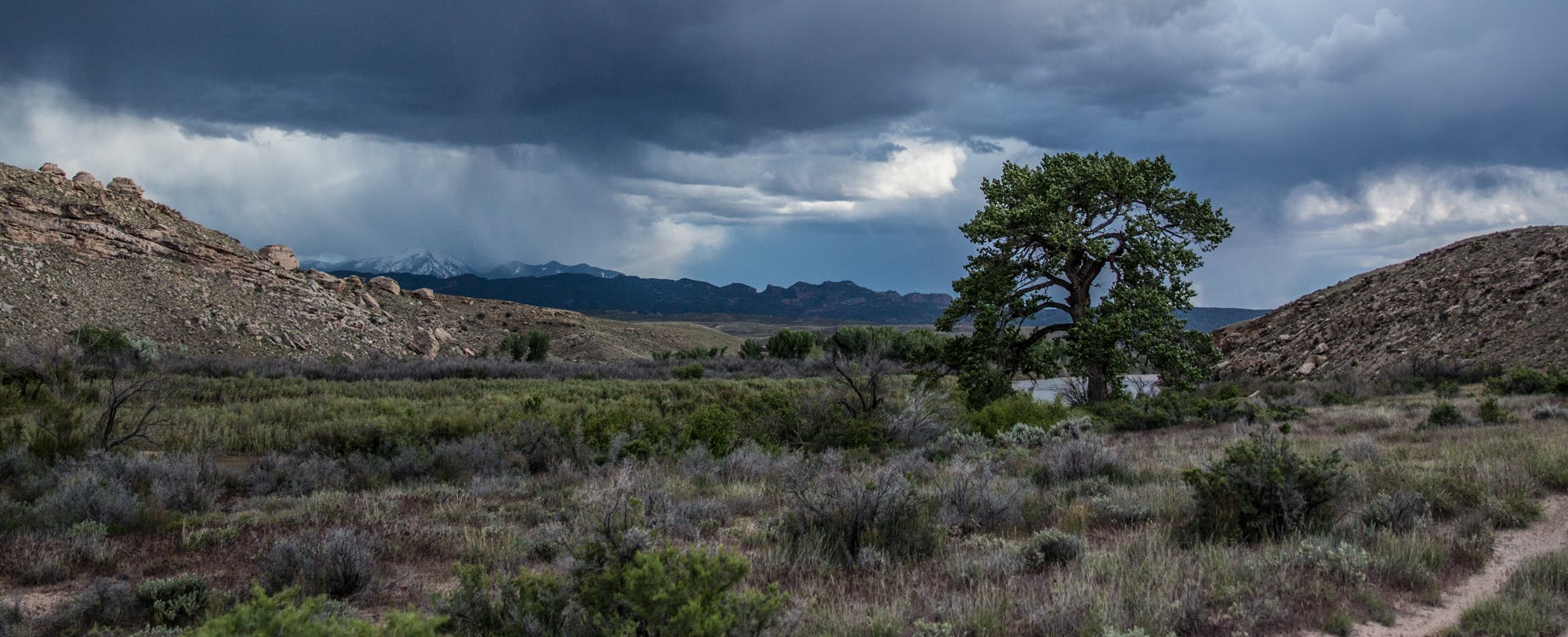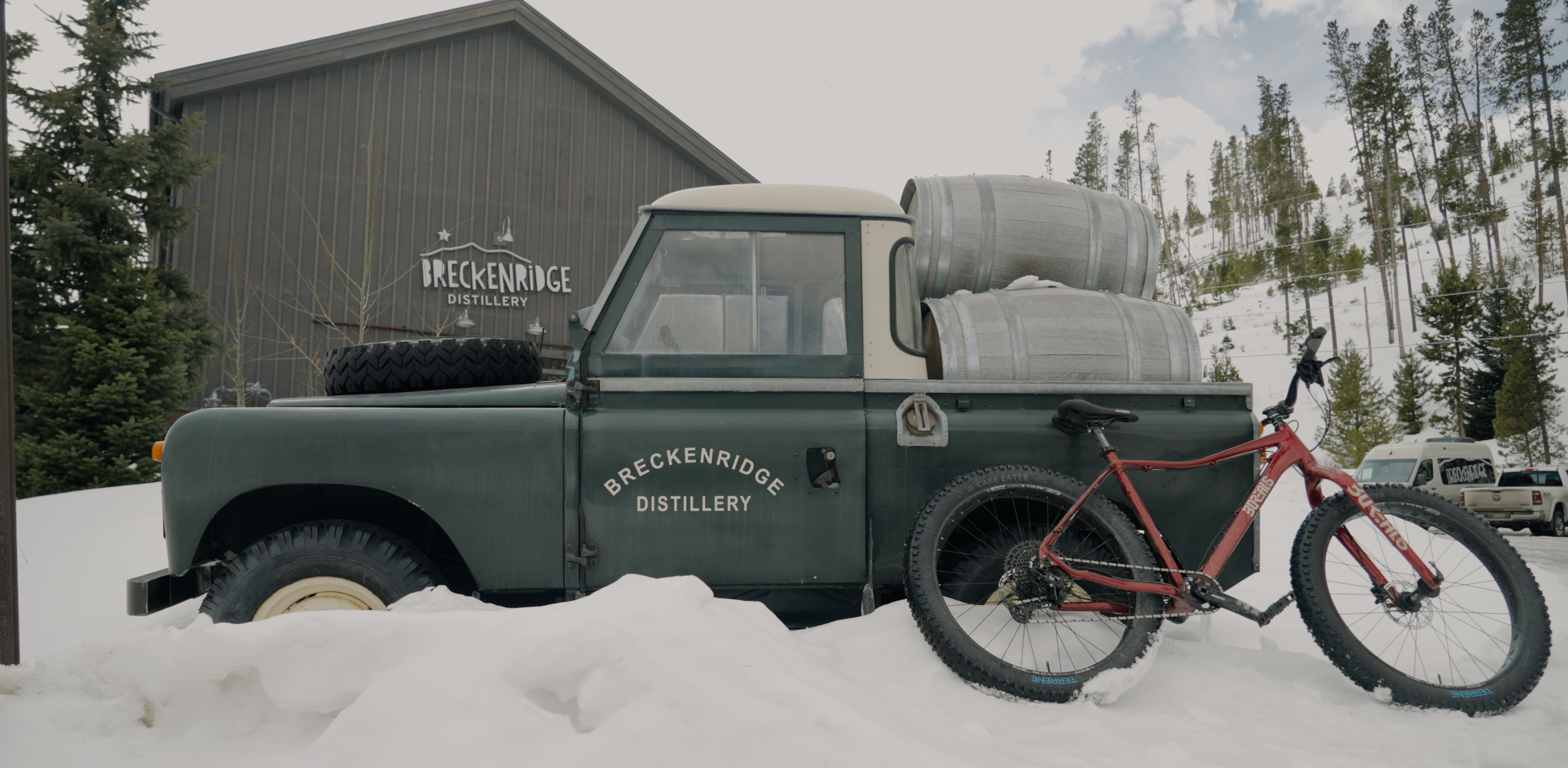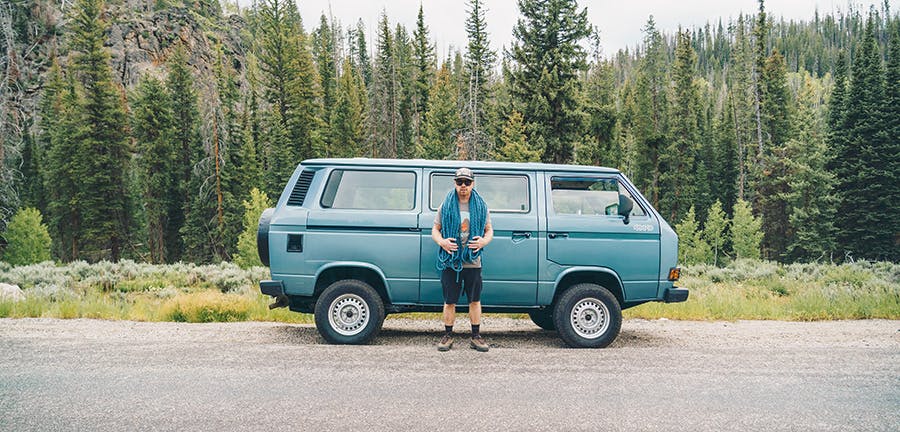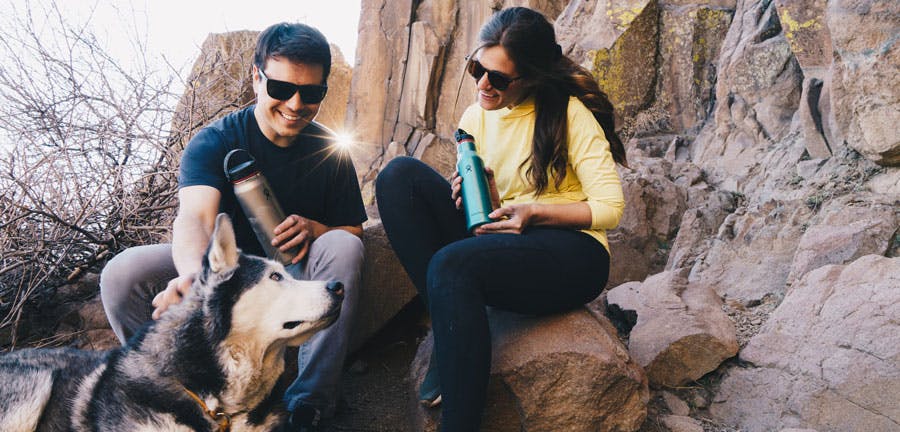9 Lessons I Learned The Hard Way: Bikepacking the Kokopelli Trail

Before attempting the Kokopelli Trail, Amos and I had zero experience bikepacking (essentially cross-country touring on a mountain bike). The decision to take on one of the country’s most famous multi-day bikepacking trails stemmed from phenomenal singletrack experiences we’d had at both ends of the 140-mile stretch: Colorado’s Fruita at the start and Moab, Utah at the terminus. Still, we couldn’t anticipate the joys and challenges that waited in between.
Over our 4-day trip, we took a crash course, one you could call “Bikepacking 101: Broken Spokes, Oceans of Mud and Endless Elevation Gain.” Thunderclouds served as hardnosed professors, scattered water sources imposed deadlines, mechanical mishaps popped up like quizzes.
Here are nine lessons learned on the trail, shared to help you plan and execute the trip of a lifetime.
1. Take the time to configure your setup

Your loaded bike has a new balance point, one that varies as you rig the frame with seat bags, handlebar rolls, frame bags, etc. Don’t plan on loading up for the first time at the trailhead parking lot; you want to have previously balanced and trail-tested your setup. Keep heavy items low, close to the center of gravity. To wit, stashing food and heavier bike tools at the base of our seat bags minimized swing.
2. Your bike is still maneuverable

Handling a fully loaded mountain bike requires adaption, but it’s not impossible to maneuver. After the initial wobbly period, adjusting to the hefty width of the handlebar roll and the inevitable swing of the seat bag, we were surprised by the spectrum of singletrack conditions the bike could handle.
3. Dealing with suspension is a constant game

We both rode the Kokopelli on full suspension bikes and rarely had our rear suspension unlocked. Not only is pedaling efficiency critical on 50-60 mile days, but also sizeable saddlebags slapped our rear tires on big drops. As a result, we only unlocked rear suspension on bumpy downhills free of whopping ledges. Our front forks, however, were constantly being locked and unlocked as terrain dictated.
4. Weather is your best friend and your worst enemy

Weather was a huge variable on the Kokopelli. The best moments on the trail were sunny and cool with a light breeze. The toughest moments occurred when the sky spat down a smattering of miserable conditions on our beleaguered helmets: unrelenting hail, booming thunderstorms that threatened electrocution and overwhelming desert heat that made faraway water sources seem even more distant.
5. Expect mechanicals

We dealt with four broken spokes over the course of the trip. Excessive, right? At one point, as Amos tried to pedal out of a hail and lightning storm, two rear spokes failed. Not surprisingly, the loading factors of bikepacking take their toll on rider and bike alike.
6. “Self-supported” is an admirable concept
Without a cassette removal tool, Amos lacked the means to replace those broken spokes himself, try as he might. Instead, he was forced to hitch into town, retrieve our car and drive to the local bike shop (Desert’s Edge takes care of your mechanicals and offers maps as well as reliable beta on water sources). If we’d been rigid on our “self-supported” ambitions, 60% of the route would have remained unridden.
7. Anticipate equipment failures

Sleeping bags, stoves, pads, bivy sacks, tents. All are prone to breakage, from zipper failure to mechanical mishaps. Triple-check all pieces before you leave and still be ready to get your MacGyver on. My sleeping pad popped the first night and I was unable to locate a leak. After a sleepless night, I emerged from my bivy sack with the birds’ first chirps. A two mile bushwhack to the highway and more hitchhiking landed me at the trailhead where a spare pad was stashed in my car. Once again, “self-supported” was only a dream.
8. Calories are key
No surprise here: we burned through calories fast. Hydration supplements, ample on-trail snackage and huge dinners were crucial. Amos, being more of a gram shaver, advocated we skip the stove and gnaw summer sausage all the way to Moab. I insisted on the stove—and we were rewarded with hot tea on cold mornings and steaming ambrosia packets (read: dehydrated meals) after long days on the trail.
9. Bikepacking redefines distance

MTB Project, a trusted resource for all of our mountain biking endeavors, pegs the ride time at 16 hours for the 145-mile trail. This ride time is either for a) insanely fit bikepackers or b) people riding with a support vehicle. Or we’re just slow. Granted, we did deal with one 12 hour day on a spectacularly muddy and miserable section. Either way, notch down your daily expectations when loaded and navigating challenging terrain.
Amos and I agree that bikepacking is a new favorite means of adventure. From the speed of travel to the adrenaline-inducing singletrack as well as the endurance challenge, there are countless reasons to embrace this rising pursuit.
See you on the trail.
Thinking about hitting the trail soon? Check out the Active Junky Bikepacking Buyer’s Guide for gear ideas and recommendations:





